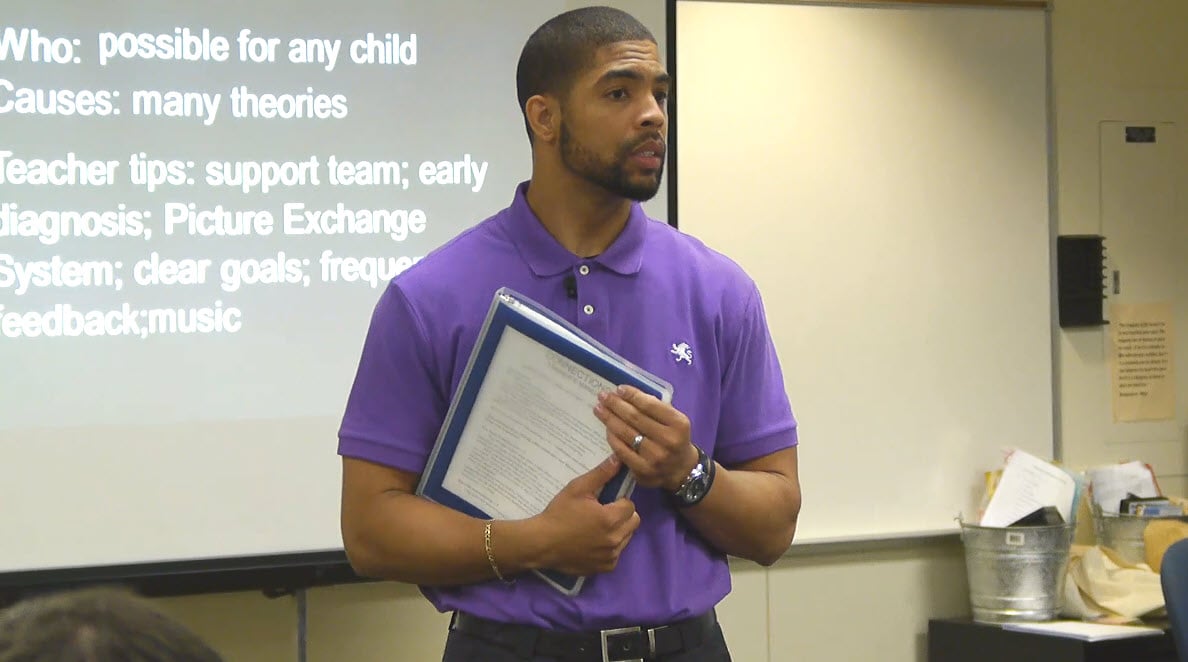



In Texas, STEM teachers are in high demand. With your passion for Science, Technology, Engineering or Math, you can become a part of the solution and inspire generations to come.
It’s a solution that is greatly needed, considering that according to the Texas Education Agency, STEM courses experience some of the highest percentages of out-of-field teaching in Texas.
That means many of those currently teaching these critical courses aren't experts in the field they teach. Texas children deserve great STEM teachers. As a qualified STEM teacher, you can make a difference and possibly inspire some students into embarking upon their own STEM career. How do you become a STEM teacher? If you're currently in a STEM field, it's probably easier than you think.
The two primary paths to start teaching STEM in Texas are:
1. Bachelor's Degree in Education, which includes a focus on a STEM subject
If you have at least a bachelor's degree and work in STEM, you'll likely find an EPP very appealing. Some of the many benefits of choosing this path to teach in a STEM classroom include:
To enter an EPP with a bachelor's degree, you'll need a minimum of 2.5 GPA in the last 60 semester hours attempted. This will be viewable on your official transcript. If you meet the requirements, you can start the program during your last year of a bachelor's degree program.
Those without a bachelor's degree need five years of full-time paid experience within the last 10 years. However, if you have an associate's degree, this requirement is cut down to two years.
The Texas Education Agency (TEA) will oversee your progress. Before you can enroll in an EPP, you'll need to set up an account with this agency.
You must set up a TEA Login (TEAL) account to do this. This will give you access to your profile located in the Educator Certification Online System (ECOS). Use the first and last name that matches your Texas driver’s license or state identification.
The TEAL online portal will also be helpful down the road when you need to access any certification information. You can read more about how to access this part of the site in our article, Texas Teacher Certification Lookup Directions.
Naturally, Texas takes the safety and welfare of children seriously. You'll need to submit your fingerprints for a background check.
TEA background checks include:
Enroll in an EPP program and start your STEM coursework. During the program, you'll complete 300 hours of training. Of these 300 hours, 30 will come in an actual classroom observing a teacher mentor assigned to you.
While much of your coursework is online, it's important to realize that some courses may require a combination of online and in-person. Don't forget the importance of teamwork. You'll likely work online or in person with a study group on projects.
The in-person training aspect can be extremely beneficial for many students. The ability to ask questions and get answers from ex-teachers, principals and vice principals can really vault your understanding and preperation in becoming a teacher. Look for programs, like ECAP, that offer in-person training.
As part of the certification process, you must complete and pass a content exam in the area of study you plan to teach. You may take multiple exams as needed to expand the areas in which you can teach.
For example, as a future STEM teacher, you might choose to take one or more of these exams featured on the list of Texas teacher certification tests available:
At ECAP, we ask our interns to immediately take a practice content test to establish a baseline of where their knowledge base is at. This way each intern will have a good understanding of their current knowledge level in each subject area and know which areas they need further training in.
Then we strongly encouraged each intern to take 40 hours of online training before they take the actual content exam. While the content test currently has a passing grade score of 240, we instruct our interns to aim for a score of 270. Scoring 270 on the practice content test gives students some margin for error and a higher level of confidence that they can score 240 on the actual test. Once you score a 270, ECAP will give you permission to take your content exams.
After you've passed your content exam, you're ready to put what you've learned into practice in a supervised setting. You'll apply for an internship, complete it, and receive and use constructive feedback.
it, and receive and use constructive feedback.
You will receive a statement of eligibility from your educator preparation program after passing your content exam. You can then apply for an intern certificate using the TEAL account you created.
With an intern certificate, you can begin looking for a teaching internship, which provide invaluable experience in the classroom and offer the work experience needed to see your training in action.
You already know just because you can do calculus in your sleep doesn't mean you can teach it. However after completing an EPP program, you'll have the skills you need to facilitate learning of your discipline of choice.
The PPR, or Pedagogy and Professional Responsibility, is a test that ensures you know how to work with students, understand ethical responsibilities and can competently begin teaching in a STEM classroom. The PPR is a multiple-choice test plus essay questions. It covers 13 competencies you'll need to understand to teach.
According to the TEA, the PPR “is designed to assess whether a test taker has the requisite knowledge and skills that an entry-evel educator in this field in Texas public schools must possess.”
The test will focus on whether you know how to perform important functions required of teachers, including:
After passing your PPR, you're ready to apply for your standard teacher's license and start applying for a STEM teaching position in a Texas school district. You can apply for your standard certificate using the TEAL login account you created.
Get ready to inspire the next generation to engage with and embrace STEM in the classroom and in everyday life.
Topics: Becoming A Teacher
Micah is the Director of Curriculum & Technology. He holds a Bachelor of Arts in British Literature, from the University of North Texas and a Master of Arts in Teaching, from Louisiana College. In his previous career, Micah served for 14 years as a banker and bank manager. For the majority of this period, Micah managed the Downtown Fort Worth location of Frost Bank. In 2005, Micah finally surrendered to his true calling to be an educator. After a brief, but fulfilling term teaching high school English at Flower Mound High School in Lewisville ISD, Micah went to work for the family business, training teachers.
7166 Baker Blvd., Suite B · Richland Hills, Texas 76118
Phone 817-284-7731 | Fax 817-284-3396
Login | Make Payment | ECAP Handbook | Privacy Policy | Pricing
Your Comments